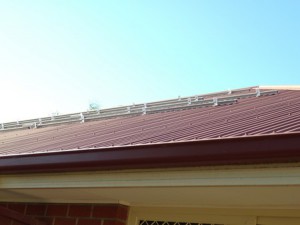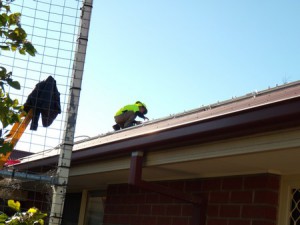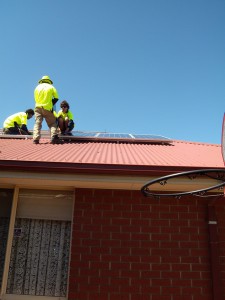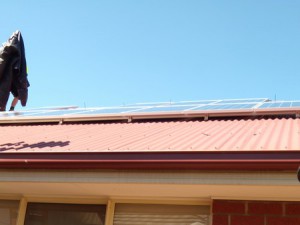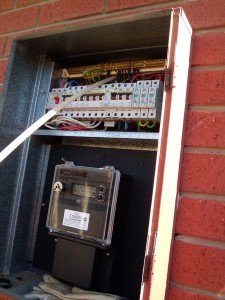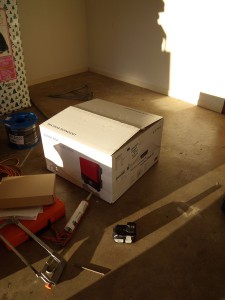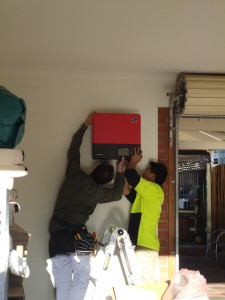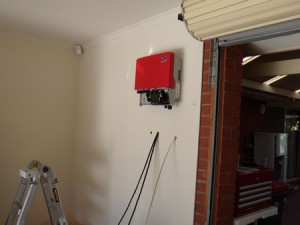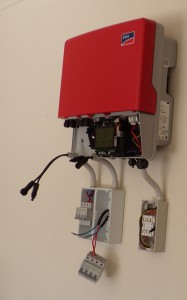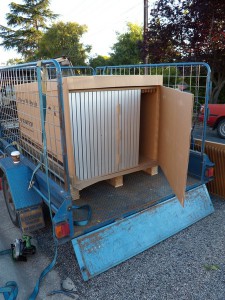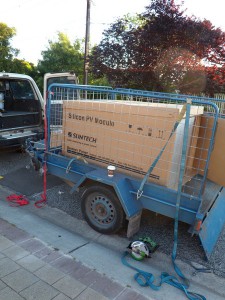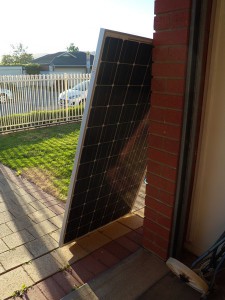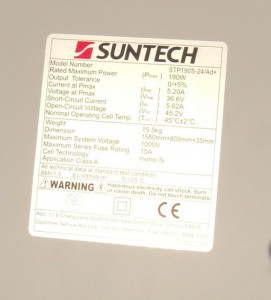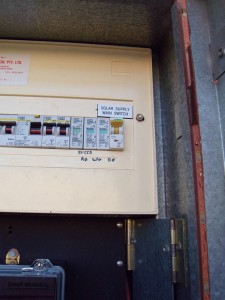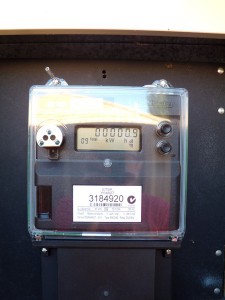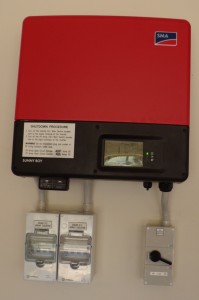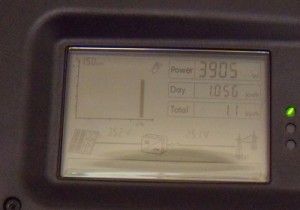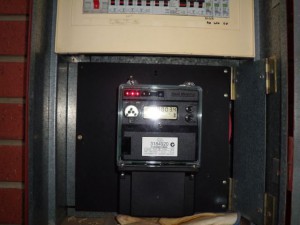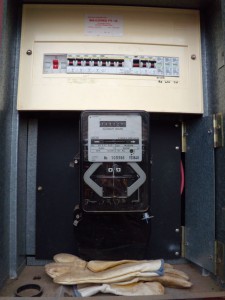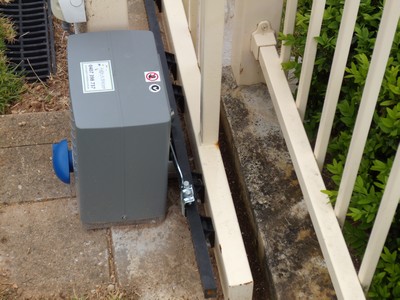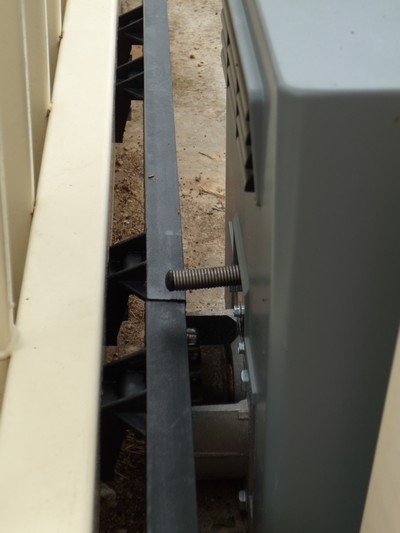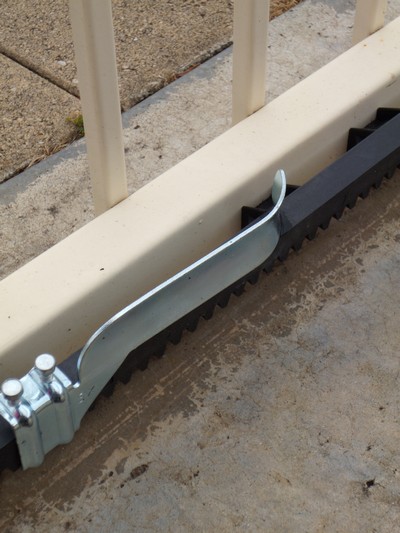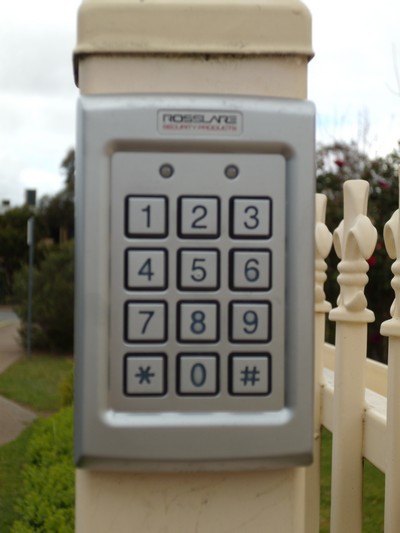It’s been a week since a 4.18kW solar system was installed on our roof and I thought it would be nice to document what it’s done in these seven days. The Suntech solar panels, the Sunny Boy inverter, and our good friend, the sun, have teamed up to generate 139.39 kWh. The good people of my house (myself among them) consumed 40.79 of those kWh during daylight hours resulting in a net export into the South Australian electricity grid of 98.6 kWh. In the times where the solar system output did not exceed our power consumption (for example at night when solar power generation tends to be….sub-optimal) we’ve drawn 41 kWh from the power grid. By my calculations (and neglecting the fixed electricity connection costs) we’re about $40 in credit in our first week of solar power generation. Not too bad at all.
Author Archives: markn
Rooftop PV System Installation – The Roof
This is the third set of images from the installation of our rooftop photo voltaic system. This time it’s just some images of the railing system used on our roof to hold the solar panels. Nothing too exciting, I still have to get up there and take some close ups of the finished product. In the meantime, enjoy.
And just for giggles here’s a picture of the meter box in a state of undress…..
Rooftop PV System Installation – The Inverter
This is the second set of images I took of the installation of our rooftop solar energy system that was installed a couple of days ago. This time all the images are of the inverter, the bit that converts the DC (direct current) power generated by the solar panels into AC (alternating current) power suitable for use in our house or for feeding back into the power grid. I decided on Sunny Boy inverter because they have a reputation for being reliable and efficient. No point skimping here, I just wanted something that worked and worked well. Our unit is a Sunny Boy STB 4000TL which has a nominal 4.2kW capacity, a nice digital display and Bluetooth communications for remote monitoring. These units are made in Germany and from what I’ve read are one of the most reliable inverters on the market today.
We decided to have our inverter installed in the garage for security reasons and to keep it out of the weather. The wall in there is a simple gyprock (dry wall to most people) clad stud wall so installation was pretty simple. Below you can see the inverter in various states of installation.
Rooftop PV System Installation – The Panels
The 4.18kW rooftop photovoltaic system was installed yesterday. The installers arrived at 7:00AM and were done by 1:00PM. Luckily a couple of extra installers arrived at 11:30AM or so which meant the system went up a bit quicker than expected. I took a lot of images and have decided to post them up in separate entries. Today I’ll post some images of the panels. We’ve got 22 Suntech STP190S-24/Ad+ (mono-crystalline 190W) panels arranged in two rows on our roof. Electrically they are connected to our inverter (a Sunny Boy 4.2kW unit) in two strings of 11. Below are some images of the panels prior to their installation on the roof.
Our Solar System is Installed!
The installers finished up at about 1:00PM today and our shiny new solar system has been happily generating power this afternoon and I’ve been monitoring it via bluetooth and the “Sunny Explorer” software. More on that later. In the mean time here’s some images of the parts of the system that are not on the roof.
Rooftop Solar PV System is Go!
It’s 7:00AM and the Braemac solar installers are here right on time to install our rooftop PV system. I’ll take some photos and post them up as time permits.
The Old Power Meter is Dead. Long Live the New Power Meter!
We arrived home after running errands all day and to my delight ETSA had been and changed the old power meter to a new import/export meter (which you can see above). It’s a 3 phase Email unit with a neat digital readout and some inviting looking buttons that are just asking to be pressed. The red LED’s are a nice touch too. Sadly all these buttons, displays and shiny red lights are going to cost us north of $600.
Vale Old Power Meter
Rooftop Solar PV Install is Booked
I hadn’t bothered calling Braemac about an install date for our rooftop PV system because I suspected that they would be crazy busy with the run up to the September 30 FIT cut-off deadline. I emailed them this morning at 9 asking about an install date and got an answer back within 10 minutes offering me three different dates that were just two weeks away! So it’s booked in for installation on the 18th of October. Kudo’s to Braemac for being on the ball and answering my email so quickly.
The Sliding Gate is Alive!
So the good folks at Gate-A-Mation (catchy name) came and automated the front sliding gate on the house a couple of weeks back. It rained pretty much the whole time which meant they were doing the job for a bit longer than expected, around about 3.5 hours. The actual installation of the hardware didn’t take too long, about an hour and a half. Then it was 2 hours spent adjusting various electronic settings in the motor and fiddling with the plastic rack on the gate to get the gate operating nicely.
The motor is a Deimos BT 24V unit that runs off of the 240VAC supply that is available at the gate. You can see the motor above which is attached via dyna-bolts to a concrete foundation. The blue component is the manual clutch release that is unlocked via a key.
A view of the motor showing pinion that drives a nylon rack that the installers screwed to the bottom of the sliding gate. The spring in the middle is a spring switch that is activated by limit stops at each end of the gate.
A close up of one of the limits at the end of the gate and showing a section of the plastic rack on the bottom of the gate.
And my favourite part, the keypad for opening and closing the gate when you don’t have a remote. I wasn’t going to get this but one look at the nicely made stainless steel enclosure and tactile keys made me want it. It’s programmable to do all sorts of neat stuff (still have to read through the manual) and is backlit at night time! Anything with blue LED illumination MUST be good 🙂 The keypad is fixed securely to the outside post of the gate and has proved to be very useful to get in and out of our yard when we’re walking to the park.


